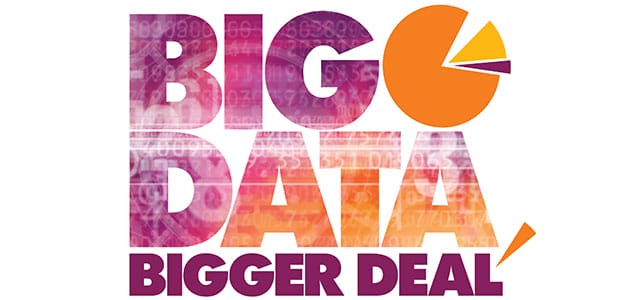Black Hills Corp. is taking a new approach to the old problem of finding employees.
After a 2008 acquisition, the 130-year-old energy conglomerate doubled its workforce to about 2,000 employees. With that, the average age of line and operations technicians and other workers at the $1.3 billion public company jumped from approximately 45 to 50. Forecasts showed that, within seven years, close to a quarter of the workforce would be eligible to retire.
That kind of turnover could have spelled trouble for utilities that the Rapid City, South Dakota, company runs because it’s bound by state regulators to provide gas and electric power with minimal disruptions.
To calculate exactly how many employees would retire a year, the types of workers needed to replace them, where those new hires were most likely to come from and how much training they would need to safely take over for outgoing workers, Black Hills turned to an untried source of help: big data.
It’s a move more companies are taking.
It has been more than a decade since Oakland Athletics General Manager Billy Beane used scientific methodology and statistics to take the then-low-performing A’s to one of the winningest teams in the Major Leagues, even though it had one of the league’s lowest payrolls. It’s a revolutionary gamble depicted in the book and movie Moneyball. More recently, statistician blogger Nate Silver became an overnight sensation after correctly predicting President Barack Obama’s overwhelming victory in the 2012 presidential election. As horrific as the damages were from Hurricane Sandy, they could have been much worse had meteorologists not accurately interpreted weather data to estimate when and where the storm would land, helping hundreds of thousands flee to safety ahead of time.
It’s all big data, and the world is generating and analyzing more of it. Websites, social networks, smartphone apps, cloud-based software services, cheaper data storage—all of it is contributing to the creation of information that this year alone is expected to reach 1.2 zettabytes. That’s the equivalent of 1 billion terabytes of raw, unstructured data.
Companies rank business analytics as the most important technology innovation they face, according to a December 2012 report from tech industry analyst Ventana Research.
Advocates believe precision number crunching can help companies become better at things like picking the perfect job candidates, keeping valued employees from leaving, grooming the right people to move up in an organization, planning future workforce needs and more.
It’s an area that’s ripe for a makeover. In the U.S. alone, companies spend 40 percent or more of their total revenue on payroll, says Josh Bersin, a human resources analyst who is the founder of Bersin by Deloitte, writing on his Forbes.com blog.
The buzz over successes at early workforce analytics adopters such as Google Inc. and Xerox Corp. is giving HR practitioners a bad case of big data fever. They’re buying workforce analytics software or adding modules to existing enterprise resource planning and human capital management software suites. In 2012 alone, SAP’s SuccessFactors Inc. division quadrupled its customers using workforce analytics tools, says Tony Ashton, the company’s senior director of product management for workforce planning and analytics.
HR departments also are contracting with outside workforce analytics companies, bringing data scientists and “people analytics” specialists on staff, and prepping themselves with conferences, blogs and books devoted to the subject.
So far, though, the promise of big data to transform workforce management has remained just that, a promise. “Big data is still the wild, wild west,” says Phil Simon, author of the just-published Too Big to Ignore: The Business Case for Big Data.
In the area of talent management alone, less than half of the global companies use objective data when making workforce decisions, and fewer than 20 percent were satisfied with the ability of their current data management systems to manage talent data, according to an SHL global assessment report published in February.
The obstacles to adopting better workforce analytics are many, starting with entrenched HR attitudes and practices that favor relationship-based decisions over cold, hard facts. It’s still too common for executives or hiring managers to go with one candidate over another based on a hunch or
because they went to an Ivy League school, Simon says.
For HR and other functions, just because companies are investing in Big Data software or services doesn’t mean they know what to do with it. Or they might not want to change how they operate despite knowing better. “You have to overcome the employee or cultural resistance to it,” Simon says.
The term “HR big data” gets tossed around to mean any number of things. Students of the discipline generally take it to describe a massive amount of information with a large number of variables that is quickly processed and analyzed so results can be used to make faster, evidence-based decisions. “We see more and more of our clients constructing a workforce strategy that’s as detailed and evidence-based as any financial strategy or business strategy they have,” says Haig Nalbantian, an HR industry veteran and senior partner at HR management consultant Mercer.
Instead of looking back at the end of an activity to see how it worked so HR can put in improvements for the next round of things, Big Data lets them be proactive, says David Bernstein, vice president of the data analytics division of jobs listings distributor eQuest Inc. He is also a blogger. “If something isn’t working, it can be changed right away, he says.
Generally, Big Data doesn’t just refer to information obtained from inside a company’s current employee records or operations, but to a mix of personnel data and information from competitors, industry or other benchmarks.
Getting HR to switch to data-driven decision-making isn’t easy, but sometimes the alternative is too serious to ignore.
That was the case at Black Hills, which three years ago didn’t have a formal plan for replacing retiring workers. Continuing the status quo wasn’t an option after the company acquired a Kansas City, Missouri-based power company with five utilities and saw its workforce double and age overnight.
Replacing retiring workers wasn’t going to be easy. Many of its employees, from engineers and power-line mechanics to systems operators and natural-gas technicians, have highly specialized skills that make them hard to replace.
As part of a companywide strategic initiative, Black Hills ran a pilot project at one utility to assess its future workforce needs. Black Hills used workforce analytics software and other data to discover how many of the utilities’ employees were expected to retire or leave voluntarily within five years, and how much the business was expected to grow. They did calculations to find out how many job functions were expected to be added, changed or relocated, and also on promotion rates and how long it takes replacements for different jobs to get up to full productivity.
Based on the pilot, Black Hills created a five-year-plan that outlines the companies’ labor needs for all of its businesses, in specific jobs and locations. It has led the company to make a number of changes on how it recruits, hires and trains, including filling the recruiting pipeline for certain highly technical positions earlier, says Bob Myers, Black Hills’ chief human resources officer.
Toward that end, Black Hills is working one-on-one with technical schools to develop training programs to produce a specific number of entry-level jobs every year for a set number of years.
To address the potential skills gap retiring workers could create, the company is enticing them to stay on the job longer. This year, Black Hills started offering all employees a retirement readiness and financial planning benefit, and employees who are 50 and older can work with a company-sponsored certified financial planner.
To help fill future labor demands internally, Black Hills started a management-training program for front-line supervisors and midlevel managers. Taught by senior managers, the training includes classroom sessions, 360-degree feedback and individualized development training. The company also hired a technical training and safety director and is considering building training centers to do more consistent training on the technical sides of the business, Myers says.
Finally, Black Hills is automating some processes to do more with fewer workers. The company switched to automatic meter readings and redeployed about 40 former meter readers into new jobs, and more may make the switch in the next couple of years.
Black Hills’ workforce planning programs are run by an in-house organizational development team that worked with business unit leaders to create labor demand models and use workforce analytics software. Myers declined to share the company’s budget.
“There’s an old saying that chance favors the prepared,” Myers says. “This is what this is about: How do you develop such an understanding of this that you can prepare well in advance and reap the benefits of being prepared?”
As more companies such as Black Hills warm up to HR big data, they can choose from a number of technology vendors eager to help.
Workforce analytics from SAP’s SuccessFactors business have been used by Black Hills as well as Aetna Inc., Amway and Comcast Corp. to name a few. Automatic Data Processing Inc. is spending millions to provide clients with real-time employee and industry analytics. Taleo Corp., which Oracle Corp. bought for $1.9 billion a little over a year ago, is touting its commitment to big data and predictive analytics for recruiting.
Jobs-listings distributor EQuest’s predictive analytics service combs through data from 1 million job openings that flow through its job board posting distribution service every day. Customers can sift through the data to determine not only the best job board to post a specific opening but also the best day of the week and time for the listing to appear.
Other companies are plumbing HR big data niches, too. San Francisco-based Evolv on Demand, for example, provides HR analytics for hourly workers, services that companies such as Xerox and The Results Cos. are using to screen call-center job applicants.
Despite the influx of vendors, a lot of HR big data isn’t easily accessible. “It’s not as simple as Googling it,” says Gerry Crispin, a recruiting industry consultant. “It still involves real people who understand numbers who will find the source and analyze the information, as opposed to simply pushing a button.”
There has been talk for years that HR deserves a seat at the executive leadership table, but at many companies that hasn’t happened. One reason, industry observers say, is because HR historically hasn’t spoken the language of business: numbers.
Big data could change that—if HR can overcome its analytics aversion, says David Bernstein, vice president of the data analytics division of eQuest Inc. “Moving forward, business is requiring HR people to speak numbers, and if you’re not into that, you’ll be out of the conversation.”
Michelle V. Rafter is a contributing editor. Comment below or email editors@workforce.com. Follow Workforce on Twitter at @workforcenews.






